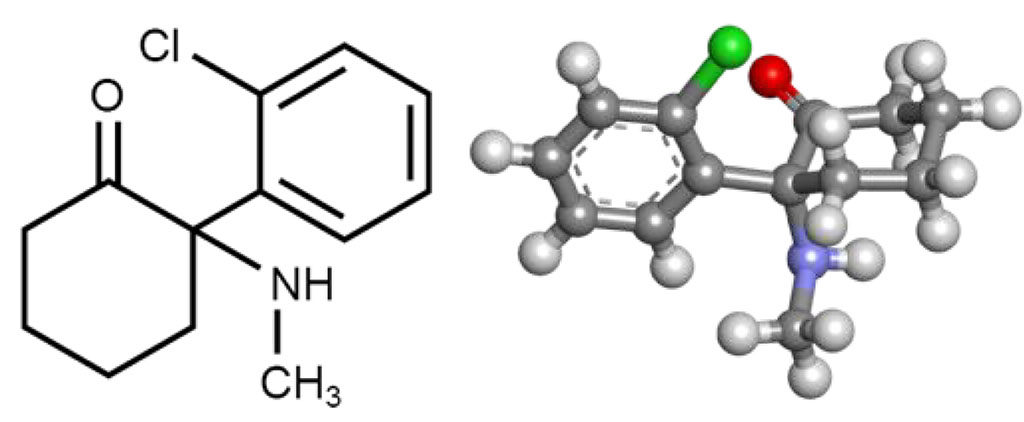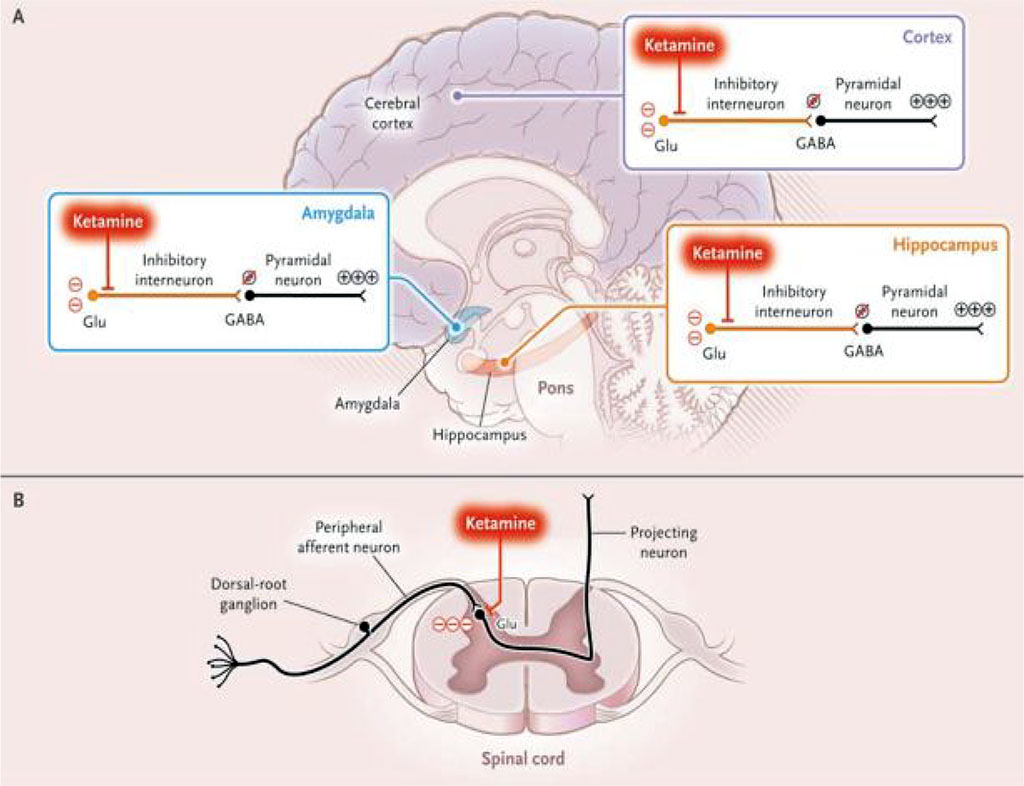- Home
- About the Journal
- Peer Review
- Editorial Board
- For Authors
- Reviewer Recognition
- Archive
- Contact
- Impressum
- EWG e.V.
Anxiety and depression are the most frequent psychiatric disorders associated with organic diseases. PDS (Perioperative Depression Symptoms) represent a depressive episode which occurs mostly in the early postoperative phase. It was observed that the patients presenting PSD have a higher risk of postoperative complications, an increased length of hospitalization and a more reserved prognosis.
A series of recent studies have shown that the usage of ketamine in small doses significantly reduces major depression symptoms in the short time after its administration. The ketamine blocks the NMDA (N-methyl-D-aspartate) receptors, leading to the presynaptic release of glutamate and increasing the activity of dopaminergic neurons with antidepressant role.
Keywords: ketamine, small doses, postoperative depressive symptoms, improvement.
Ketamine – chemical denomination: 2-(2-chlorophenyl)-2-methylamino-cyclohexanone (Figure 1). It is a derivate of fenilciclidine, antagonist of NMDA (N-methyl-D-aspartate) receptors with minimum action on receptor’s GABA, on monoaminergic, muscarinic, nicotinic receptors and on those for opioids (McBain & Mayer, 1994).

Figure 1 (Ketamine, 2016): chemical formula and atomic structure of ketamine
Ketamine depresses the neocortex and certain subcortical structures and stimulates the limbic system and the hippocampus, performing a “dissociative” anesthesia characterized by superficial sleep, involuntary movements, spontaneous breathing, environmental detachment and strong analgesia. It has a neuroprotective and immunomodulatory effect, reducing the effect of pro-inflammatory cytokines (Figure 2), being recently introduced in the treatment of depression.

Figure 2 (Brown et al., 2010): Ketamine’s Action Mechanism
Recent studies have shown the antidepressant effect that appears in short time after ketamine administration. The administration of this anesthetic substance in small doses has significantly reduced the symptoms of perioperative depression. A marked reduction in anxiety, postoperative pain and delirium after surgery has also been observed.
Perioperative Depressive Symptoms is a type of depressive manifestation that appear in patients pre-, intra- and also in the postoperative period, with predilection in the early postoperative phase. It is characterized by extreme anxiety, irritability, fatigue, sleep disorders, guilt and suicidal ideation. Patients with PDS have been observed to have a higher risk of postoperative complications, increased hospitalization length and, in general, a more reserved prognosis (Ghoneim & O’Hara, 2016; Hamilton, 1960).
To assess the severity of depressive episodes in adults, the following scales are used: Montgomery-Asberg Depression Scale,Hamilton Depression Rating Scale, Patient Health Questionnaire-9, Hospital Anxiety and Depression Scale, etc. Hamilton Depression Rating Scale is the most used scale for the selection and monitoring of patients in the research studies on depression treatment (Paduraru et al., 2019; Vendemmia et al., 2019; Checherita et al., 2019). The original version contains 17 items, with a system of cumulated scores based on common symptoms of depression, respectively sleep disorders, fluctuations of body weight, fatigue state, sexual dysfunctions and cognitive disorders (Hamilton, 1960).
Thakurta et al. have reported the significant improvement of depressive symptoms 80 minutes after the drip with small doses of ketamine and observed that 77% of subjects have fulfilled the answer criteria after one post-drip day. The response was maintained for one week for 13% of patients.
Yang Zhou et al. have studied the effect of low doses of ketamine in PDS (perioperative depressive symptoms) in patients undergoing supratentorial brain tumor resections. Patients with symptoms of moderate to severe depression were enrolled in the study, using the Patient Health Questionnaire-9 and Montgomery-Asberg Depression Scale. The target group of patients were given intravenous ketamine 500microgrames / kg for 40 minutes after opening the dura mater. Small doses of ketamine were found to reduce the frequency of PDS and the algetic symptomes during the postoperative period (Thakurta et al., 2012; Zhou et al., 2018).
Zarate et al. report the amelioration of depressive symptoms 110 minutes after the administration of ketamine in lower doses (100 - 500 microgrames/kg). 71% of patients have fulfilled the response criteria and 29% of remission, one day after administration in endovenous drip. The response has been maintained for one week for 35% of the subjects (Zarate et al., 2006).
Akira Kudoh et al. studied the depressant response after ketamine administration in patients undergoing orthopedic surgery. The study included patients with major depression, evaluated according to Diagnosis and Statistical Manual of Mental Disorder, in at least one year treatment with antidepressants (imipramine, mianserin and clormipramine). The depression state was quantitatively assessed 2 days preoperatively and 1-3 days postoperatively, using the HDRS scale. The findings of this study showed that low doses of ketamine used intra-anesthetically has improved the postoperative depressive state and significantly improved patient’s pain after an orthopedic surgery (Kudoh et al., 2002).
SAD (Social Anxiety Disorder) is affecting around 12% of US adults, being defined as an important and persistent fear against certain social situations, having a negative impact on the work quality, interpersonal relations and quality of life (Lipsitz & Schneier, 2000; Taylor et al., 2018).
Jerome H. Taylor et al. had studied the effects of ketamine on a lot of patients with social phobia. The ketamine and placebo drips had been administered randomly, with a period of repose of 28 days between the drips. The anxiety evaluations were made 3 hours after the drip and the patients had been monitored for 14 days. The participants had significantly presented a response to treatment after the drip with Ketamine (0.5 mg/kgc) as reported to placebo (normal saline solution). This study proves the efficiency of small ketamine doses in the reduction of social anxiety (Taylor et al., 2018).
In conclusion, we can assert that we can foresee the usage of ketamine in the improvement of anxious-depressive disorders in the future. Anesthetic induction with small ketamine doses has improved the postoperative psychic status of patients with refractory depression at usual treatments.